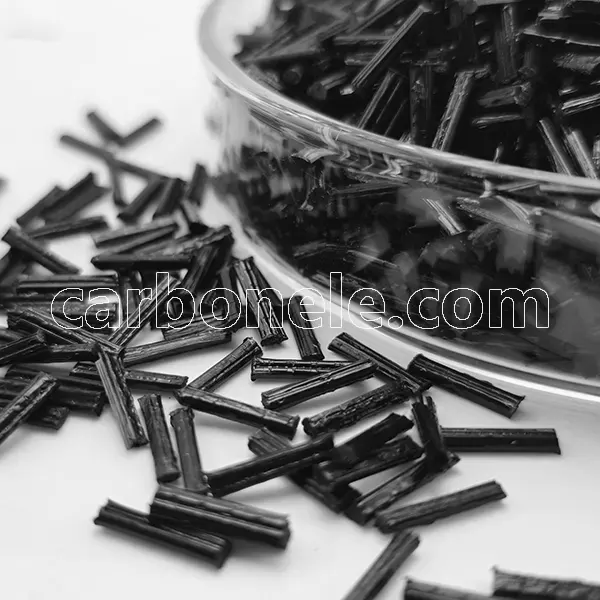PA66 CF In Automotive Lightweighting - Carbon Fiber Compounds Manufacturer | Supplier
What are the goals and significance of automotive lightweighting?
The goal of automotive lightweighting is mainly to reduce the curb weight of cars while ensuring safety, comfort and performance. Automotive lightweighting is of great significance.
1. It can improve fuel economy. For traditional fuel vehicles, for every 100 kilograms reduction in vehicle weight, fuel consumption per 100 kilometers can be reduced by about 0.3 to 0.6 liters. For example, for a small family car, fuel costs can be saved annually after lightweighting, reducing dependence on petroleum resources.
2. Reduce emissions. Lightweighting reduces the emission of harmful gases in automobile exhaust, helping to improve the quality of the atmospheric environment. For example, after lightweighting, a medium-sized SUV can reduce carbon dioxide emissions by several tons.
3. Improve performance. On the one hand, the acceleration performance becomes better. The lighter body has less inertia, and the engine can accelerate the car faster. For example, for two sports cars, the lightweight one has faster starting and acceleration. On the other hand, the handling performance is improved, making the car more flexible and enhancing stability.
4. It is crucial for new energy vehicles to increase the cruising range. For every 100 kilograms reduction in weight, the cruising range of pure electric vehicles can be increased by about 10 to 15 kilometers. At the same time, although automotive lightweighting has a high initial cost, from the perspective of the entire life cycle, costs can be saved, such as reducing fuel consumption costs, reducing raw material costs and maintenance costs.
Applications and Challenges of PA66 CF in Automotive Lightweighting
Automotive lightweight design has become an important goal that many automakers continuously pursue. With the continuous progress of technology, the application of PA66 CF (polyamide 66 carbon fiber reinforced material) in the manufacturing of automotive parts has received extensive attention.
PA66 CF has a very wide range of applications in the automotive field.
In terms of engine peripheral components, it can withstand high-temperature and high-pressure working environments. At the same time, compared with traditional metal components, the weight is significantly reduced. This helps to reduce the overall weight of the engine and improve the power performance and fuel efficiency of the car.
Interior structural parts are also where PA66 CF can be put to good use. It can provide high-strength support for the interior of the car and create a more fashionable and comfortable driving environment.
In transmission components, the high strength and wear resistance of PA66 CF enable it to better cope with complex working conditions and extend the service life of components.
In different models, there are countless specific application cases of PA66 CF components. Some high-end models have begun to use PA66 CF to manufacture engine hoods, intake manifolds and other components, which not only achieve significant weight reduction effects but also improve the overall performance of the car. In the field of new energy vehicles, PA66 CF has even greater application potential. Since new energy vehicles are more sensitive to weight, PA66 CF can help increase battery range and reduce energy consumption.
The reason why PA66 CF is highly favored in the automotive lightweighting industry is due to its many performance advantages. First of all, high strength and high rigidity are its outstanding characteristics. The addition of carbon fiber greatly enhances the mechanical properties of PA66, enabling it to withstand greater loads and ensuring the safety of the car under various complex road conditions. Secondly, good thermal stability enables it to maintain stable performance in high-temperature environments and adapt to the working requirements of high-temperature areas such as around the engine. In addition, PA66 CF also has good wear resistance and corrosion resistance, which can extend the service life of automotive parts.
However, PA66 CF also faces some challenges in automotive lightweighting applications. Cost control is one of them. The relatively high price of carbon fiber leads to a high cost of PA66 CF materials. This makes automakers need to weigh the relationship between cost and performance when considering adopting PA66 CF. In order to reduce costs, researchers are working hard to develop new production processes and technologies to improve the production efficiency of carbon fiber and reduce material costs.
Compatibility with other materials is also a problem that needs to be solved. In the automotive manufacturing process, different materials often need to be used in combination. The connection and cooperation between PA66 CF and other materials such as metals and plastics need to be specially designed and optimized to ensure the overall performance and reliability of components. In addition, the recycling and reuse of PA66 CF is also a challenge. Although there are already some studies on the recycling of PA66 CF, the recycling technology still needs to be further improved and the recycling efficiency needs to be increased to achieve sustainable development.
PA66 CF has broad application prospects in automotive lightweighting. Although it faces challenges such as cost control and compatibility with other materials, with the continuous progress of technology, it is believed that these problems will be gradually resolved. In the future, PA66-CF will play a more important role in the automotive industry and make greater contributions to the lightweighting, high performance and sustainable development of cars.
Read more article related to CFRTPs, please click here.
Previous News
What factors will affect the reinforcement effe...Next News
Multifunctional carbon fiber composites for ele...
Feature Product
-
PA12 LCF30 for Drone Fuselages & Wings
What do you know about PA12 LCF30? PA12 ...
-
Competitive Price PA6 LCF30 Composites
What’s it? PA6 LCF30, which stands...
-
ABS CF10 Compound ABS 10%CF Thermoplastic Compo...
What’s ABS CF10? ABS CF10 refers t...









